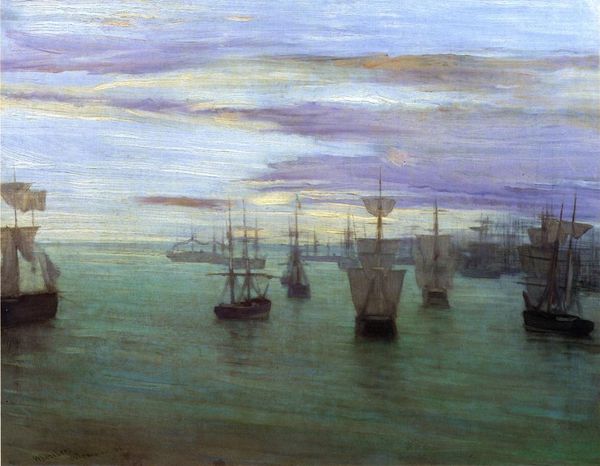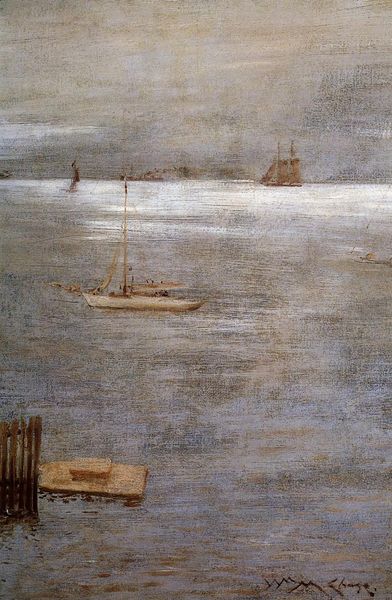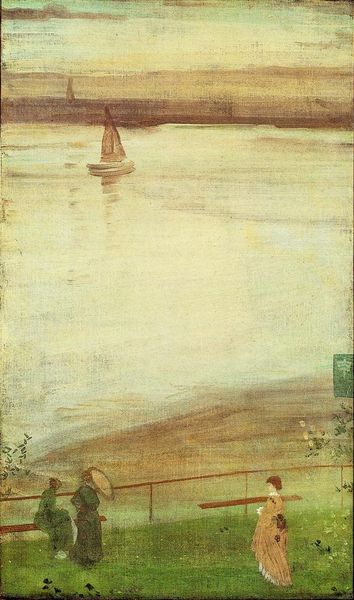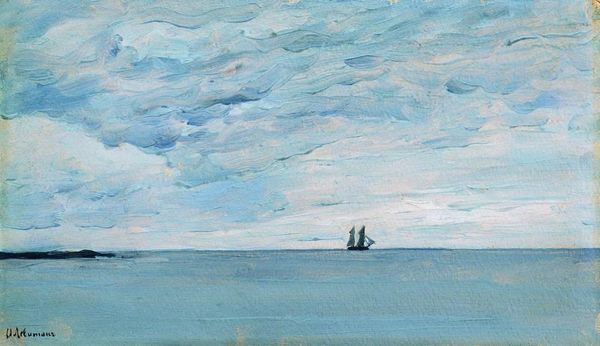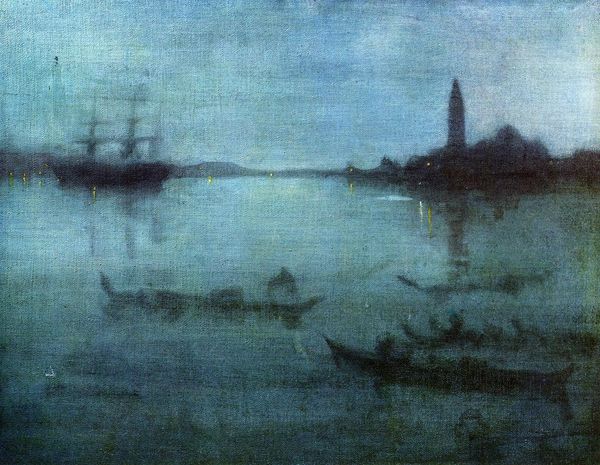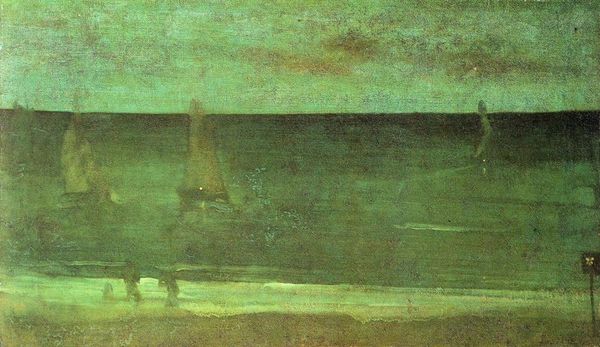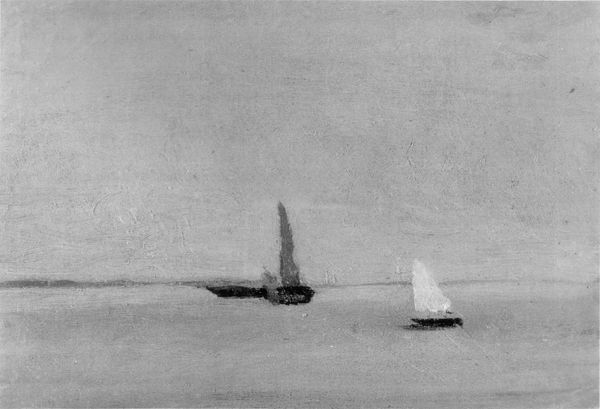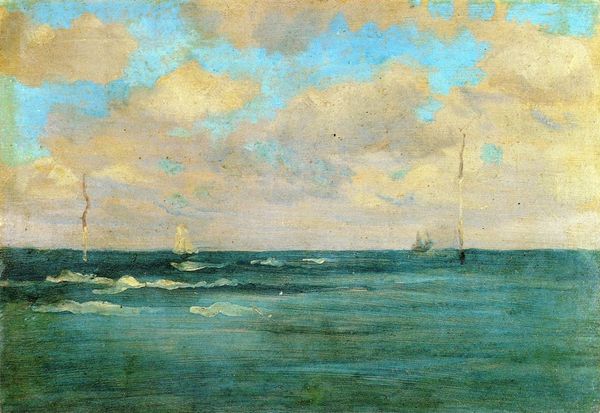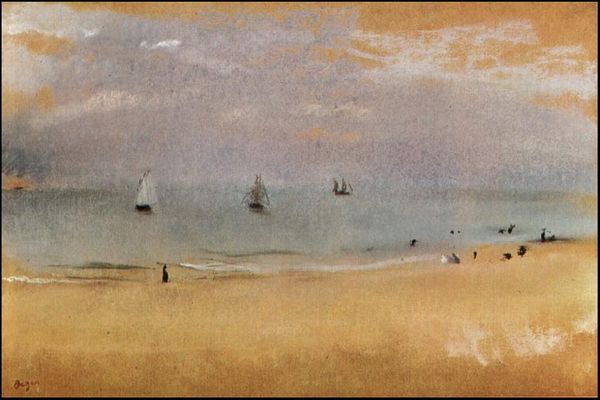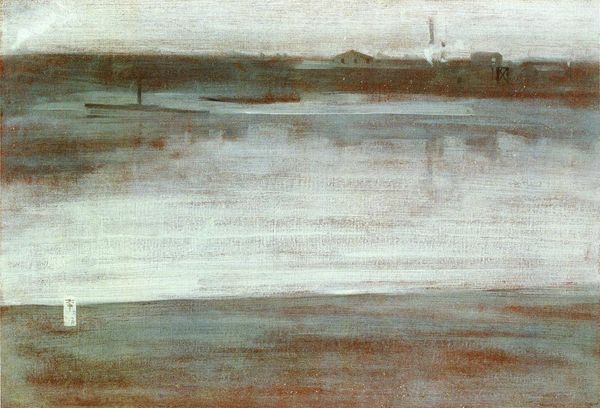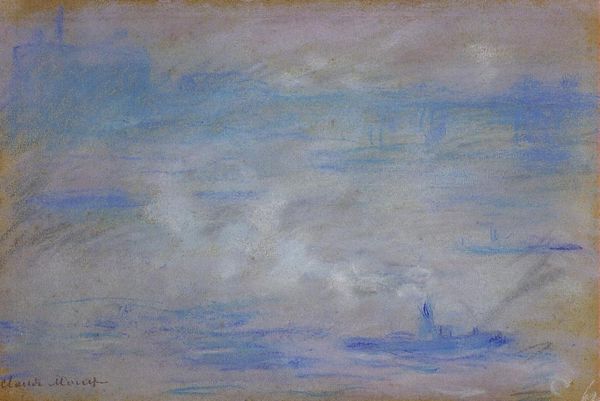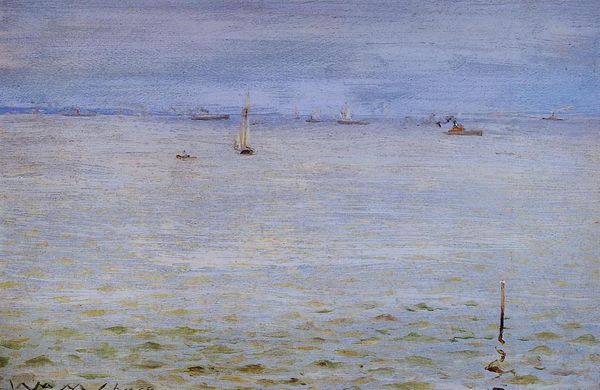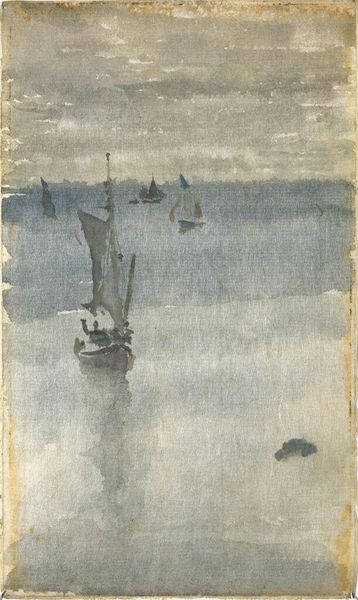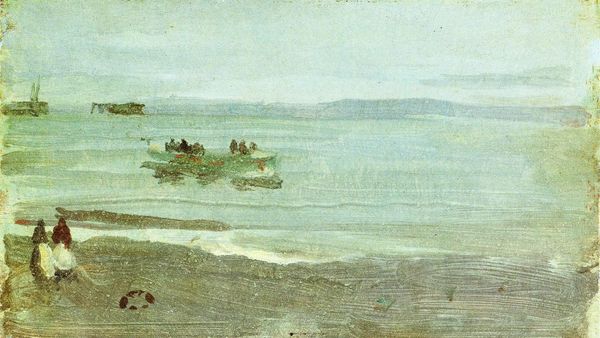
painting, oil-paint
#
water colours
#
painting
#
oil-paint
#
landscape
#
watercolor
Dimensions: 50.8 x 93.98 cm
Copyright: Public domain
Editor: So this is Whistler's "Nocturne - the Solent" from 1866, executed in watercolor. It's incredibly ethereal; the ships seem to almost dissolve into the misty sea. What do you see in this piece that perhaps I'm missing? Curator: I see Whistler engaging with the industrialized world by depicting these ships, but doing so in a way that almost dematerializes them. Consider the materiality of watercolor itself: it's fugitive, translucent. He's using a medium that almost undermines the monumentality we associate with ships and trade. Think about the socio-economic context, too. Editor: So, it's not just a pretty picture, it's commenting on the shifting perception of industry? The deliberate obscuring feels very intentional. Curator: Precisely. And notice the texture of the paper; it's not invisible. Whistler is drawing our attention to the physical properties of the artwork, the materials and the making of art, challenging the idea of art as purely representational or aspirational. How does this approach influence our understanding of "high art" when juxtaposed with, say, the labor involved in shipbuilding and maritime trade depicted within? Editor: That’s fascinating. I hadn't considered the interplay between the ethereal representation and the implied labor of maritime industries. Curator: It also makes one consider how materials can create both meaning and accessibility. Whistler used affordable paper, making this style accessible. What can we learn by looking closer? Editor: Thinking about the process and materials definitely provides a new lens for understanding the message of the work itself. Thank you! Curator: Indeed. Considering the materiality allows us to dissect both art-making practices, accessibility, and their interplay. It shifts the discourse on art itself.
Comments
No comments
Be the first to comment and join the conversation on the ultimate creative platform.
